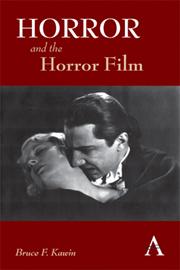3 - Fear in a Frame
from Part I - Approaching the Genre
Summary
Dreams and Reflexivity in Vampyr
When dreams appear in horror films, they often show the dreamer and the viewer what is really going on in the waking world. In Vampyra man dreams of a skeletal hand with a bottle of poison (Figure 10) and wakes in time to stop the vampire's victim from taking poison from the bottle in her hand (Figure 11). The dream and reality shots are similar, showing that the dream was an image of the truth, even if it was stylized. Dreams may offer privileged access to the mysteries and forces behind the story's events and can show them in their real forms or in forms that are more stylized or disguised. Like the dreams in Vampyr, they often appear to unleash evil and show its power but may finally be forces for good, revealing what the dreamer needs to know. The skeleton's hand in Vampyr is a warning about a real event but also a symbolic form for the hand of the victim, for the death the poison will bring her and for the more general force of death that reigns with the vampire. It shows the presence of death behind the mortal scene, which can reveal itself in a dream or in a movie as a whole. In many films, especially reflexive ones, framed narratives such as memories, dreams and tales (like those in Dead of Night) call attention, often simply by their framing, to the larger narrative structures in which they are contained.
- Type
- Chapter
- Information
- Horror and the Horror Film , pp. 32 - 48Publisher: Anthem PressPrint publication year: 2012

